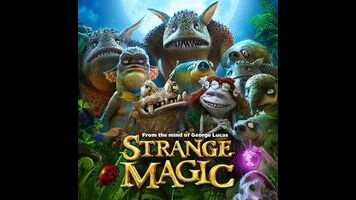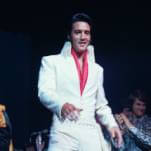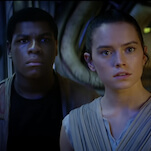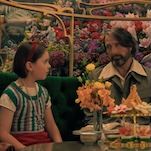A comic fairy tale that incorporates new arrangements of previously released pop songs sounds like an ill-advised indulgence of contemporary U.S. animation’s worst instincts: the last five minutes of a Shrek movie on torturous loop. But Strange Magic, an animated film from Lucasfilm and Industrial Light & Magic, borrows its sensibility from another movie from the summer of 2001: Moulin Rouge. The new film’s composer and music director, Marius De Vries, even arranged songs for Baz Luhrmann’s phantasmagorical musical.
Though animation could shed whatever minor physical limitations were imposed on Luhrmann’s vision, Strange Magic is not as transporting as Moulin Rouge. None of the re-appropriated songs—mostly oldies like “Tell Him” and “I Can’t Help Myself (Sugar Pie, Honey Bunch),” the latter used as an amusing running gag, with the occasional sampling of Beyoncé or Lady Gaga—get a reading as inspired as “El Tango De Roxanne” or Jim Broadbent’s “Like A Virgin.” But the movie maintains its own level of oddball invention that at least feels pleasantly removed from the grind of big-studio cartoon manufacturing. At times, it’s surprisingly messy for a mainstream animated feature.
Loosely modeled on A Midsummer Night’s Dream, mainly in its preoccupation with love potions causing inappropriate infatuations, Strange Magic focuses on sister fairies Marianne (Evan Rachel Wood) and Dawn (Meredith Anne Bull). Their lives turn more farcical than one might expect from a movie with a George Lucas story credit: Marianne gets her heart broken by the caddish dude-fairy Roland (Sam Palladio), while Dawn has become an unwitting crush object for her elfin best friend Sunny (Elijah Kelley). Roland and Sunny attempt to solve their romantic problems by cooking up magical love dust, angering the Bog King (Alan Cumming), who presides over the neighboring Dark Forest and wants to eradicate both love dust and, if possible, love itself.
Much of the movie takes place in the Dark Forest, which is a relief because the humanoid good-guy faces are creepier than the delightful menagerie of woodland inhabitants. With twisty snouts, floppy ears, and scaly skin mixed in with more traditional animal forms, the Dark Forest denizens resemble a zoo crossed with Jabba’s palace from Return Of The Jedi. (One grinning, mischief-making rodent even looks a little like Salacious Crumb.) Industrial Light & Magic did similarly idiosyncratic work on the animated feature Rango, and Strange Magic conjures up some wonderfully odd gags and images, like a room full of imprisoned, besotted creatures—victims of love dust who long for each other from behind bars.
The movie isn’t as daftly funny as Rango, and director Gary Rydstrom, a veteran sound designer and Pixar alum, doesn’t have the innate sense of choreography and timing that Gore Verbinski brought to that film. The restless editing jumps around from composition to composition, and the dialogue often sounds hastily written, with jokes a draft or two away from a wittier re-phrasing (one of the film’s most Lucas-like qualities, though presumably something he had little to do with). In some ways, Strange Magic represents a mild victory for quantity over quality; none of the musical performances are particularly memorable on their own, but the sheer volume of them becomes winning—as does the mixed-up, sing-song haplessness of all the characters, even Marianne’s token warrior fairy. The whimsical tone bounces through some potentially dicey ideas, like how its morality about true, non-superficial love applies mostly to weird-looking males, never tested on female characters who look less than doll-ready. The moral works for the movie itself, though: Strange Magic isn’t as traditionally attractive as other big-budget cartoons, and that’s okay.









































